
With an influx of new talent, Upstate University Hospital’s heart care program is growing stronger than ever. Bringing experience from some of the nation’s top medical facilities with formal training in specialties like structural interventional cardiology, the program is leveraging the knowledge and talents of the well established heart care team at the region’s only medical university. Upstate has assembled a dynamic group of providers that is expanding the program and offering comprehensive heart health care to Central New York.
Full Range of Services
The heart care program at Upstate University Hospital provides a full range of services—preventative, interventional, surgical, and post-operative. With six cardiology practices in the greater Syracuse area, the heart care team has increased accessibility to care and bolstered their footprint in the community. In addition to Upstate’s downtown Syracuse location, which includes the dedicated Heart and Vascular Center, cardiology consult services are available at Upstate Community Hospital as well.
The heart care team treats all health issues related to the heart including coronary artery disease, valvular heart disease, congestive heart failure, arrhythmias including atrial fibrillation, complex aortic disease including aneurysms, cardiac tumors, and the full spectrum of structural heart disease including closure of small holes in the heart. All the major cardiac surgical services are available, from open surgery to less invasive transcatheter procedures.
The physician team is composed up of cardiologists, cardiac surgeons, interventional cardiologists, a structural interventional cardiologist, electrophysiologists, and a cardiac critical care anesthesiologist who is the newest member of the team. They are supported by advanced practice providers (APPs), nurses, operating room staff, perfusionists, cardiac catheterization laboratory staff, anesthesiology staff, imaging staff, and Intensive Care Unit (ICU) staff.
Preventative education and postoperative treatment are both key components to the heart care program. For congestive heart failure patients, there is an educational support team located in Upstate’s downtown Syracuse location to help patients with lifestyle, dietary information, and support to keep them out of the hospital. This complements the cardiac rehabilitation program at the Upstate Health Care Center in Syracuse.

Introducing Dr. Marek Polomsky, Cardiac Surgery
Cardiac surgeon Marek Polomsky, MD joined Upstate University Hospital this July as an Assistant Professor of Surgery and the Medical Director for Cardiac Critical Care. He is board-certified by the American Board of Surgery and the American Board of Thoracic Surgery and most recently was the Surgical Director of the Mechanical Circulatory Support Program and the Quality Chair for Cardiothoracic Surgery at the University of Vermont Medical Center. He was attracted to Upstate University Hospital’s status as a teaching hospital, with a long tradition of educating successful medical students and surgical residents and providing top cardiac surgical care, which supports his interest in teaching and optimizing surgical performance and outcomes.
Cardiac surgeons at Upstate University Hospital benefit from a vast array of institutional resources. This can be found in the operating rooms which are equipped with the latest technology and supported by cardiac anesthesiologists proficient in the specific needs of heart patients such as utilization of transesophageal echocardiograms. “Whatever I need to do procedures, we have it here at Upstate,” said Dr. Polomsky. “The most important resource is our staff. The support from nurses, nurse practitioners, physician assistants, perfusionists, and laboratory technicians, makes this possible. The level of talent here is remarkable.”
Quality is a primary focus for Dr. Polomsky, both intraoperatively and postoperatively. He follows and has implemented protocols for Enhanced Recovery After Surgery (ERAS), through which Upstate optimizes postoperative care, such as weaning patients off ventilators and early extubation, minimizing blood transfusions, early mobilization, and focusing on nutrition. For Dr. Polomsky, compassion for his patients is paramount. “I treat each patient as if they were a member of my own family. I make sure they have the appropriate surgery that is based on medical evidence. That is what I am most proud of,” he said. “It is vital for our community to have a strong cardiac care program here, and there is a common goal among all of us for the program to grow.”
Introducing Dr. Michael Fischi, Interventional Cardiology
Michael Fischi, MD, FACC, FSCAI joined Upstate University Hospital in September 2022 as an interventional cardiologist. Using catheters to diagnose and treat heart and vascular conditions, allows patients to avoid open-heart surgery while providing life-saving results. Dr. Fischi has a background in electrical engineering and gravitates toward the tools and technologies utilized in transcatheter procedures. During his cardiology fellowship at Duke, he focused his research on cardiac assist devices, coronary interventional technology, drug-eluting stents and polymer delivery platforms. Dr. Fischi holds U.S. patents for a multi chamber sequentially inflating cardiac assist device, muscle function augmentation, and a novel percutaneous Left Ventricular Assist Device (LVAD). He also did a fellowship in coronary and peripheral vascular intervention at the University of Rochester, is a fellow of the American College of Cardiology, and is a fellow of the Society for Cardiovascular Angiography and Interventions.
FSCAI joined Upstate University Hospital in September 2022 as an interventional cardiologist. Using catheters to diagnose and treat heart and vascular conditions, allows patients to avoid open-heart surgery while providing life-saving results. Dr. Fischi has a background in electrical engineering and gravitates toward the tools and technologies utilized in transcatheter procedures. During his cardiology fellowship at Duke, he focused his research on cardiac assist devices, coronary interventional technology, drug-eluting stents and polymer delivery platforms. Dr. Fischi holds U.S. patents for a multi chamber sequentially inflating cardiac assist device, muscle function augmentation, and a novel percutaneous Left Ventricular Assist Device (LVAD). He also did a fellowship in coronary and peripheral vascular intervention at the University of Rochester, is a fellow of the American College of Cardiology, and is a fellow of the Society for Cardiovascular Angiography and Interventions.
The environment at Upstate University Hospital was a major draw for Dr. Fischi, with its focus on a heart care team that works well together and encourages learning to support patient care. “We have a nurturing environment here. People are encouraged to develop new skills and are not afraid to ask questions. Our staff is well-trained and equipped to handle emergent situations,” he said.
One of his focuses is on developing relationships with other area hospitals, primary care physicians, and external cardiology practices. “Referring physicians are looking to work with people who will provide their patients with quality care, inform them of the results of the procedure, and take care of their patients in a timely manner, without having to jump through a lot of hoops,” he said. “We are in the position to offer that to them here at Upstate.”
Team Approach to Patient Care
 The cardiologists and cardiac surgeons at Upstate use a team approach, using direct communication and constant collaboration to ensure patients receive the best possible care. Larry Charlamb, MD, Interim Chief of Cardiology said, “The cardiac surgeons are our closest allies in treating patients. It is a natural allegiance for all of us to work together to provide care.” The cardiology and cardiac surgery teams confer regularly to discuss patient cases and develop the best treatment plan moving forward.
The cardiologists and cardiac surgeons at Upstate use a team approach, using direct communication and constant collaboration to ensure patients receive the best possible care. Larry Charlamb, MD, Interim Chief of Cardiology said, “The cardiac surgeons are our closest allies in treating patients. It is a natural allegiance for all of us to work together to provide care.” The cardiology and cardiac surgery teams confer regularly to discuss patient cases and develop the best treatment plan moving forward.
Cardiac surgeon Marek Polomsky, MD, said, “Every patient is discussed in a team setting and is cared for in a collaborative manner.” In addition, a joint cardiology, cardiac surgery, and vascular surgery conference meets once a month, where the heart care team shares perspectives on the diagnostic evaluation process, treatment, and outcomes of complex cardiovascular and aortic cases. There are echocardiogram, electrocardiogram (EKG/ECG), and cardiac catheter laboratory conferences conducted regularly as well.

Introducing Dr. Srikanth Yandrapalli, Structural Interventional Cardiology
Srikanth Yandrapalli, MD, FACC joined Upstate University Hospital this July as a Structural Interventional Cardiologist. Following his role as Chief Resident of Internal Medicine at New York Medical College at Westchester Medical Center, Dr. Yandrapalli completed three fellowships in cardiovascular diseases: interventional and structural cardiology at New York Medical College; Massachusetts General Hospital/Harvard Medical School; and Brown University Hospitals. He also worked as an interventional cardiologist at Brown University hospitals. He is board certified by the American Board of Internal Medicine in Internal Medicine, Cardiovascular diseases, and Interventional Cardiology.

Dr. Yandrapalli is one of the few formally trained structural interventional cardiologists in Central New York. Structural interventional cardiology is a specialized field that manages structural abnormalities or defects within the heart including the valves, the muscle, and the septum or chambers. It bridges the gap between surgery and medicine, allowing patients to receive treatment in a less invasive way.
For structural cardiology procedures, planning is essential and the first step is imaging. Utilizing CT Scan imaging and advanced perioperative transesophageal echocardiography with 3D technologies, the staff can create 3D models of the patient’s anatomy in order to determine the feasibility and approach to managing a structural heart condition. “This ensures a really good roadmap. I have to know what to expect so that we can provide safe and effective treatment to our patients,” Dr. Yandrapalli said.
Through his training, Dr. Yandrapalli has cultivated knowledge of the latest tools and technology. “I have learned not just how to do these procedures, but also how to navigate complications and risks that may arise, so we can more safely treat patients,” he said. Upstate University Hospital leadership is committed to providing advanced services and is focused on improving the access to the minimally invasive procedures Dr. Yandrapalli performs, including providing the latest technology available. “Technology plays a really important role in what I do. We want to offer the least invasive treatment available to our patients and we are committed to doing that at Upstate,” he said.
“The cardiac surgeons are our closest allies in treating patients. It is a natural allegiance for all of us to work together to provide care.”
Looking Ahead to the Future With a strong foundation and the support of senior leadership, the heart program can continue to add new offerings to its service line. Upstate Medical University Department of Medicine Chair, Cynthia Taub, MD and Upstate University Hospital Chief Medical Officer, Amy Tucker, MD are both cardiologists with extensive background in clinical practice and program development. With leadership laser-focused on the prioritization of heart care, Upstate is positioned to see tremendous growth in the coming years by serving the needs of the community. “We are building on the strengths of the academic medical setting where we can offer an even greater range of cardiac services, such as the expertise needed for patients in our Cancer Center whose treatment may affect the heart, or patients in our obstetrics/maternal fetal medicine program who have cardiac conditions during pregnancy. There is room to develop more preventative care and address care disparities. We have the system and expertise to offer that,” said Dr. Taub.
 By developing relationships with regional hospitals, primary care physicians, and cardiology groups, Upstate looks to further expand its access. In the last year, catheter laboratory volume has increased by 50% and referrals have risen as well. Two of the cardiac catheter laboratories are being updated, featuring the most up-to-date technology available for the interventional cardiologists to perform transcatheter procedures. The heart care program also plans to recruit additional staff in several areas including electrophysiology, advanced cardiac imaging, advanced heart failure cardiology to expand access to services.
By developing relationships with regional hospitals, primary care physicians, and cardiology groups, Upstate looks to further expand its access. In the last year, catheter laboratory volume has increased by 50% and referrals have risen as well. Two of the cardiac catheter laboratories are being updated, featuring the most up-to-date technology available for the interventional cardiologists to perform transcatheter procedures. The heart care program also plans to recruit additional staff in several areas including electrophysiology, advanced cardiac imaging, advanced heart failure cardiology to expand access to services.
 Expert witness testimony is essential to all medical malpractice legal proceedings. Usually, without a medical expert, plaintiffs cannot proceed to trial, and defendants are usually doomed to an adverse jury verdict. Medical experts are recruited in many ways, even from proprietary companies that offer a diverse variety of experts.
Expert witness testimony is essential to all medical malpractice legal proceedings. Usually, without a medical expert, plaintiffs cannot proceed to trial, and defendants are usually doomed to an adverse jury verdict. Medical experts are recruited in many ways, even from proprietary companies that offer a diverse variety of experts.

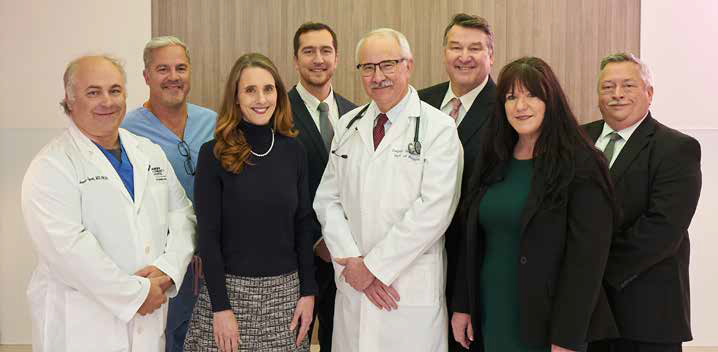
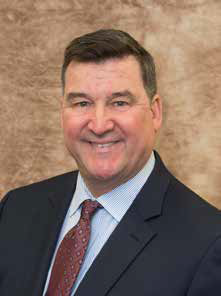
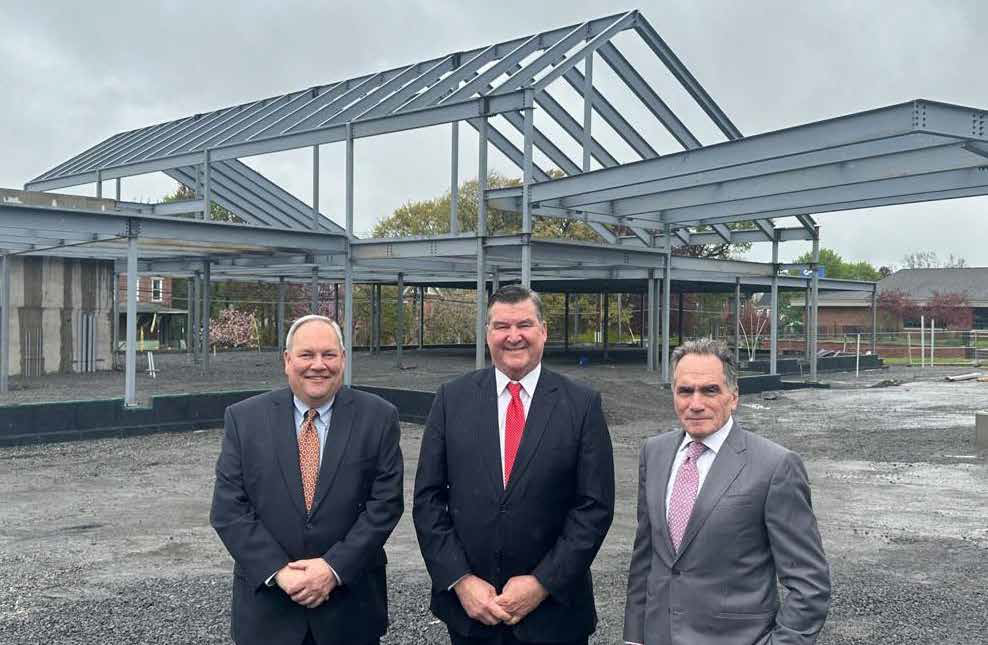
 Demand for ACH’s services, utilization and growth continues to increase as we bring acute, post-acute and preventive care to members of our community. What I am most proud of is according to a recent study by The University of Wisconsin Population Health Institute, Cayuga County has experienced remarkable year over year improvements in health outcomes vs. other NYS counties over the last 10 years despite numerous challenging health factors. That means as the only health system in the area we are making a difference in our community when it comes to health outcomes,” he said.
Demand for ACH’s services, utilization and growth continues to increase as we bring acute, post-acute and preventive care to members of our community. What I am most proud of is according to a recent study by The University of Wisconsin Population Health Institute, Cayuga County has experienced remarkable year over year improvements in health outcomes vs. other NYS counties over the last 10 years despite numerous challenging health factors. That means as the only health system in the area we are making a difference in our community when it comes to health outcomes,” he said.
 shopping” for their medical treatments, since the Cancer Center is connected to the main hospital. Combined with the partnership of excellent SUNY Upstate cancer physicians, this increased convenience for patients will provide for more efficient, cost effective, and quality care right in their own community. Dr. Komal Akhtar, Medical Director for the new Cancer Center, has extensive training in Internal Medicine, Hematology and Medical Oncology, and is a member of the American Society of Clinical Oncology. She expressed her excitement about the impact the new Cancer Center will have on the area served by ACH.
shopping” for their medical treatments, since the Cancer Center is connected to the main hospital. Combined with the partnership of excellent SUNY Upstate cancer physicians, this increased convenience for patients will provide for more efficient, cost effective, and quality care right in their own community. Dr. Komal Akhtar, Medical Director for the new Cancer Center, has extensive training in Internal Medicine, Hematology and Medical Oncology, and is a member of the American Society of Clinical Oncology. She expressed her excitement about the impact the new Cancer Center will have on the area served by ACH. Alongside the addition of the Cancer Center, ACH is enhancing the level of cardiovascular care for its patients with the new Auburn Heart Institute. Located in a newly renovated wing on the third floor of ACH, this multimillion-dollar investment in cardiac care will be led by Dr. Ronald Kirshner, who was recently appointed as its chair and medical director. Dr. Kirshner recently served as the Chief of Cardiac Services and Cardiothoracic Surgery at Rochester Regional Health Sands Constellation Heart Institute for over 30 years, and his clinical interests and expertise include creating systems to drive healthcare efficiency and quality.
Alongside the addition of the Cancer Center, ACH is enhancing the level of cardiovascular care for its patients with the new Auburn Heart Institute. Located in a newly renovated wing on the third floor of ACH, this multimillion-dollar investment in cardiac care will be led by Dr. Ronald Kirshner, who was recently appointed as its chair and medical director. Dr. Kirshner recently served as the Chief of Cardiac Services and Cardiothoracic Surgery at Rochester Regional Health Sands Constellation Heart Institute for over 30 years, and his clinical interests and expertise include creating systems to drive healthcare efficiency and quality.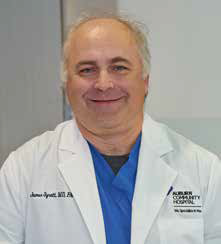
 Another important addition to the team at ACH is Dr. James Syrett, who joined the hospital in May of 2023 as the Chief Medical Officer. Board certified in both Emergency Medicine and EMS Medicine, Dr. Syrett has become only the third physician within a 100 mile radius of Auburn to be certified by ImPACT Applications Inc., a leading provider of concussion management tools, which helps ensure healthcare providers have the necessary skills and knowledge to use the tools effectively. Utilizing his extensive experience in EMS and Emergency Medicine, as well as an interest in the emergency management of concussions. Dr Syrett will serve as the Medical Director of the new Auburn Concussion Clinic, which opened in October and is seeing patients next day when referred from other physicians. This gives patients immediate access to concussion specialists, which is unusual in this region.
Another important addition to the team at ACH is Dr. James Syrett, who joined the hospital in May of 2023 as the Chief Medical Officer. Board certified in both Emergency Medicine and EMS Medicine, Dr. Syrett has become only the third physician within a 100 mile radius of Auburn to be certified by ImPACT Applications Inc., a leading provider of concussion management tools, which helps ensure healthcare providers have the necessary skills and knowledge to use the tools effectively. Utilizing his extensive experience in EMS and Emergency Medicine, as well as an interest in the emergency management of concussions. Dr Syrett will serve as the Medical Director of the new Auburn Concussion Clinic, which opened in October and is seeing patients next day when referred from other physicians. This gives patients immediate access to concussion specialists, which is unusual in this region.
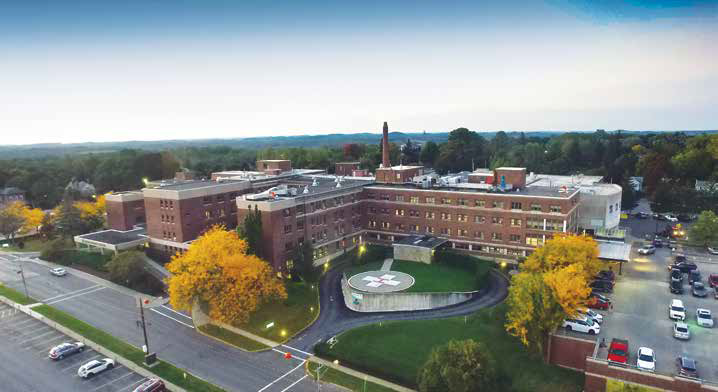
 We are planning a Heritage trip and have spent hours doing research. My daughter pulled up Chat GPT, gave it a few directions and in 30 seconds it listed an itinerary, things to visit, and lots of other info for consideration.
We are planning a Heritage trip and have spent hours doing research. My daughter pulled up Chat GPT, gave it a few directions and in 30 seconds it listed an itinerary, things to visit, and lots of other info for consideration.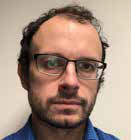
 Although physician burnout is not a new phenomenon, it has been put in the spotlight recently due to its rise in frequency. A 2021 survey by the Mayo Clinic and Stanford Medicine noted that 62.8% of physicians experienced symptoms of burnout, up from 38% in the previous year.
Although physician burnout is not a new phenomenon, it has been put in the spotlight recently due to its rise in frequency. A 2021 survey by the Mayo Clinic and Stanford Medicine noted that 62.8% of physicians experienced symptoms of burnout, up from 38% in the previous year.

 FSCAI joined Upstate University Hospital in September 2022 as an interventional cardiologist. Using catheters to diagnose and treat heart and vascular conditions, allows patients to avoid open-heart surgery while providing life-saving results. Dr. Fischi has a background in electrical engineering and gravitates toward the tools and technologies utilized in transcatheter procedures. During his cardiology fellowship at Duke, he focused his research on cardiac assist devices, coronary interventional technology, drug-eluting stents and polymer delivery platforms. Dr. Fischi holds U.S. patents for a multi chamber sequentially inflating cardiac assist device, muscle function augmentation, and a novel percutaneous Left Ventricular Assist Device (LVAD). He also did a fellowship in coronary and peripheral vascular intervention at the University of Rochester, is a fellow of the American College of Cardiology, and is a fellow of the Society for Cardiovascular Angiography and Interventions.
FSCAI joined Upstate University Hospital in September 2022 as an interventional cardiologist. Using catheters to diagnose and treat heart and vascular conditions, allows patients to avoid open-heart surgery while providing life-saving results. Dr. Fischi has a background in electrical engineering and gravitates toward the tools and technologies utilized in transcatheter procedures. During his cardiology fellowship at Duke, he focused his research on cardiac assist devices, coronary interventional technology, drug-eluting stents and polymer delivery platforms. Dr. Fischi holds U.S. patents for a multi chamber sequentially inflating cardiac assist device, muscle function augmentation, and a novel percutaneous Left Ventricular Assist Device (LVAD). He also did a fellowship in coronary and peripheral vascular intervention at the University of Rochester, is a fellow of the American College of Cardiology, and is a fellow of the Society for Cardiovascular Angiography and Interventions. The cardiologists and cardiac surgeons at Upstate use a team approach, using direct communication and constant collaboration to ensure patients receive the best possible care. Larry Charlamb, MD, Interim Chief of Cardiology said, “The cardiac surgeons are our closest allies in treating patients. It is a natural allegiance for all of us to work together to provide care.” The cardiology and cardiac surgery teams confer regularly to discuss patient cases and develop the best treatment plan moving forward.
The cardiologists and cardiac surgeons at Upstate use a team approach, using direct communication and constant collaboration to ensure patients receive the best possible care. Larry Charlamb, MD, Interim Chief of Cardiology said, “The cardiac surgeons are our closest allies in treating patients. It is a natural allegiance for all of us to work together to provide care.” The cardiology and cardiac surgery teams confer regularly to discuss patient cases and develop the best treatment plan moving forward.

 By developing relationships with regional hospitals, primary care physicians, and cardiology groups, Upstate looks to further expand its access. In the last year, catheter laboratory volume has increased by 50% and referrals have risen as well. Two of the cardiac catheter laboratories are being updated, featuring the most up-to-date technology available for the interventional cardiologists to perform transcatheter procedures. The heart care program also plans to recruit additional staff in several areas including electrophysiology, advanced cardiac imaging, advanced heart failure cardiology to expand access to services.
By developing relationships with regional hospitals, primary care physicians, and cardiology groups, Upstate looks to further expand its access. In the last year, catheter laboratory volume has increased by 50% and referrals have risen as well. Two of the cardiac catheter laboratories are being updated, featuring the most up-to-date technology available for the interventional cardiologists to perform transcatheter procedures. The heart care program also plans to recruit additional staff in several areas including electrophysiology, advanced cardiac imaging, advanced heart failure cardiology to expand access to services. As the newest member of the Syracuse Orthopedic Specialists Neck & Back Team, Jessica Albanese MD brings nearly seven years of experience to the care of spinal conditions and injuries. Dr. Albanese received her bachelor’s degree from Arizona State University and earned her medical degree from the University of Nevada, Reno School of Medicine. She completed her residency at the Kirk Kerkorian School of Medicine at University of Nevada, Las Vegas. Prior to joining SOS in August, Dr. Albanese completed a fellowship in adult spine surgery at the Duke University School of Medicine.
As the newest member of the Syracuse Orthopedic Specialists Neck & Back Team, Jessica Albanese MD brings nearly seven years of experience to the care of spinal conditions and injuries. Dr. Albanese received her bachelor’s degree from Arizona State University and earned her medical degree from the University of Nevada, Reno School of Medicine. She completed her residency at the Kirk Kerkorian School of Medicine at University of Nevada, Las Vegas. Prior to joining SOS in August, Dr. Albanese completed a fellowship in adult spine surgery at the Duke University School of Medicine. David A. Quinzi, MD is returning toCentral New York as the newest surgeon on the Joint Replacement Team at Syracuse Orthopedic Specialists. Dr. Quinzi received his bachelor’s degree from Cornell University and earned his medical degree at Upstate Medical University in Syracuse. He completed his residency at the University of Rochester Medical Center and in July completed a one-year fellowship in adult reconstruction surgery at the Rothman Institute in New Jersey.
David A. Quinzi, MD is returning toCentral New York as the newest surgeon on the Joint Replacement Team at Syracuse Orthopedic Specialists. Dr. Quinzi received his bachelor’s degree from Cornell University and earned his medical degree at Upstate Medical University in Syracuse. He completed his residency at the University of Rochester Medical Center and in July completed a one-year fellowship in adult reconstruction surgery at the Rothman Institute in New Jersey. Over the past five-and-a-half years, Syracuse Community Health has undergone significant change and laid the groundwork for exciting transformations still to come. Led by Mark Hall, who joined Syracuse Community Health as interim President and CEO in 2018 and came on full-time in 2019, the health care organization has been serving the Syracuse community since the 1960s. With Hall at the helm over the past several years, Syracuse Community Health has begun efforts to expand care into surrounding areas in Onondaga County, is nearing the completion of a brand-new, state-of-the-art building and is planning a family medicine residency program, all while maintaining the central mission of serving patients and those who have difficulty accessing quality health care.
Over the past five-and-a-half years, Syracuse Community Health has undergone significant change and laid the groundwork for exciting transformations still to come. Led by Mark Hall, who joined Syracuse Community Health as interim President and CEO in 2018 and came on full-time in 2019, the health care organization has been serving the Syracuse community since the 1960s. With Hall at the helm over the past several years, Syracuse Community Health has begun efforts to expand care into surrounding areas in Onondaga County, is nearing the completion of a brand-new, state-of-the-art building and is planning a family medicine residency program, all while maintaining the central mission of serving patients and those who have difficulty accessing quality health care.